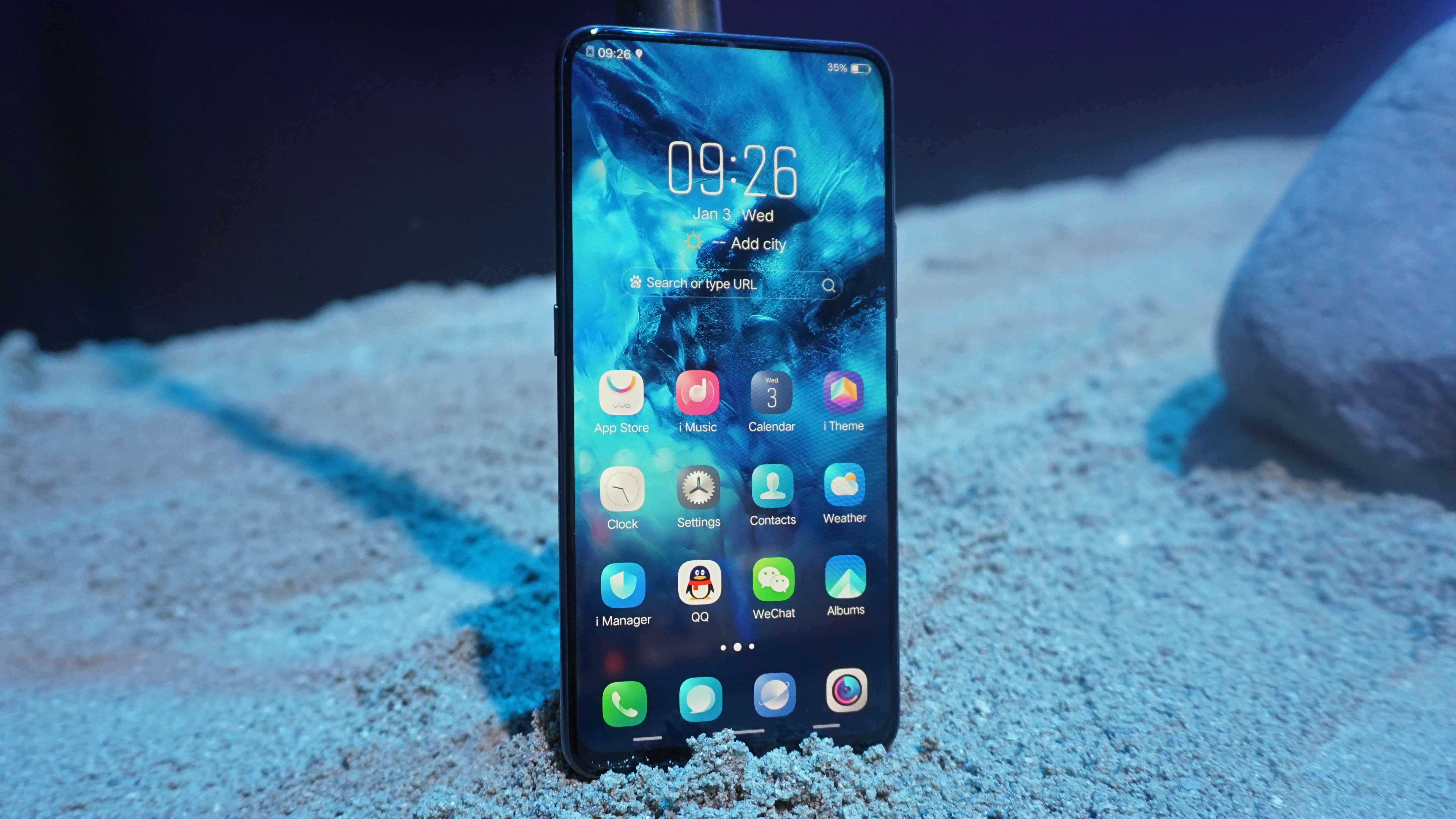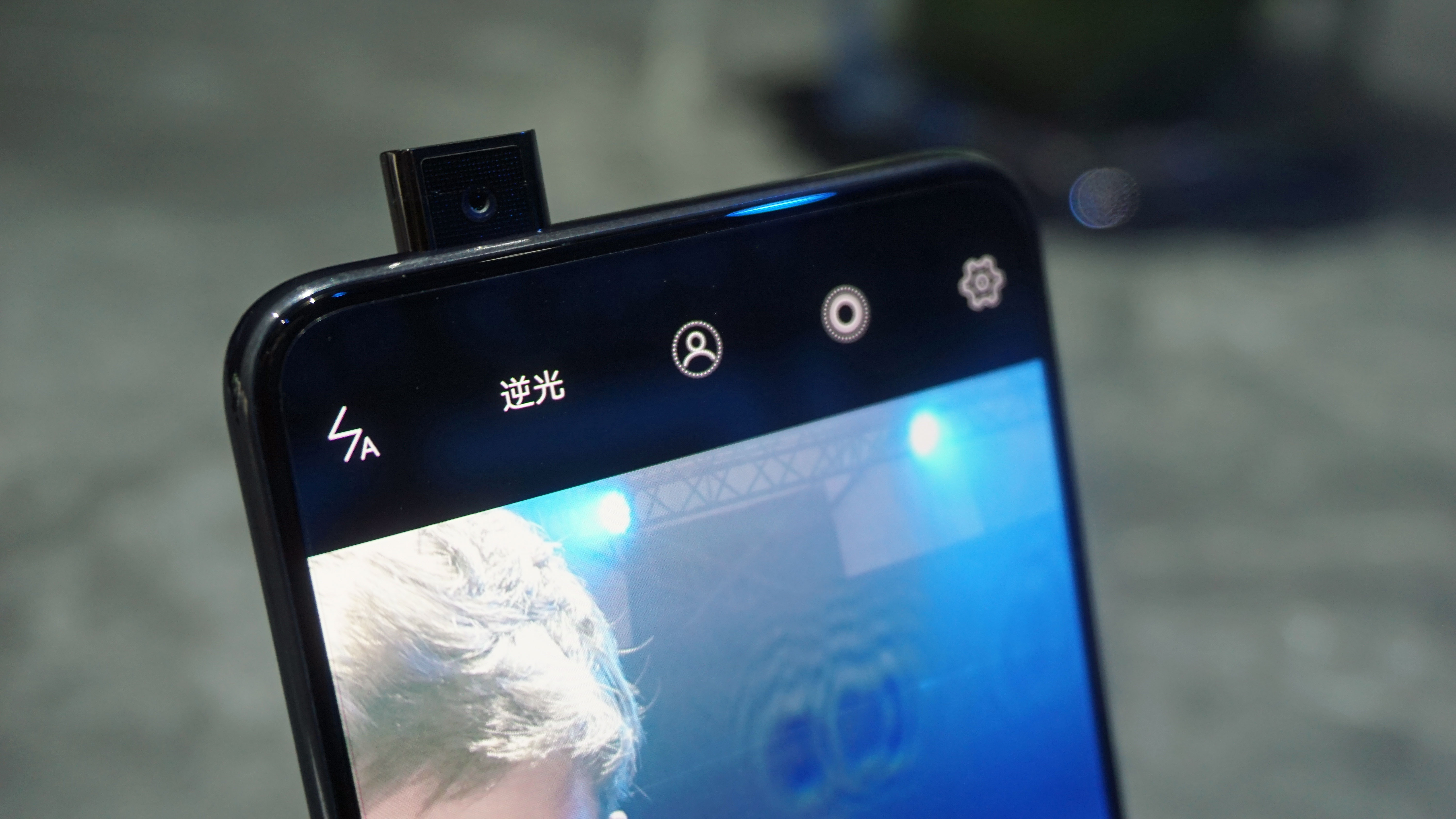5 things we've learned from 24 hours with the almost bezeless Vivo Nex

You likely won’t be able to buy the Vivo Nex when it goes on sale later this month, but that doesn’t stop it being one of the most innovative (and exciting) smartphones released in 2018.
The Nex is the latest flagship phone from Chinese company Vivo, and so far the firm has only announced availability for its home market. We have high hopes it'll come to other territories around the world, but so far nothing has been confirmed.
The Vivo Nex features an in-display fingerprint scanner, a pop-up selfie camera, an AI-toting dual sensor rear camera, 256GB of storage, a top-end processor and much more wrapped up inside a premium design.
We’ve been using the device for a little over a day now, so we're just getting into the groove and working out just how this phone works. Here are the top things we’ve learnt so far from over 24 hours with the Vivo Nex.
1. In-display fingerprint scanning works… but it takes getting used to

The Vivo Nex isn’t the first phone to come to market with an in-display fingerprint. Two previous Vivo phones have been available in China with the tech, plus there’s the limited edition Huawei Mate 10 Porsche Design that's on sale in some markets, but the feature is still very much in its infancy.
It certainly feels like a novelty on the Vivo Nex, but that's not a criticism. Regularly in our first 24 hours we found ourselves weirdly stroking our finger on the rear of the phone to find the scanner or gently brushing a thumb along the bottom edge of the display to no avail.
When you wake the device, a handy fingerprint logo comes up to remind you to tap your thumb or finger to unlock... but it's going to take a while for muscle memory to kick in.
Sign up for breaking news, reviews, opinion, top tech deals, and more.
The fingerprint scanner is speedy (although it's not as fast as the traditional scanners we’re used to) and from what we've found so far it seems to be accurate.
You can't place your finger anywhere along the bottom of the phone to unlock it - you need to hit on the finger outline that you can see in the image above. And you need to be accurate with it too, it won't work if half your thumb is hanging off the edge of the image.
It’s not perfect, but it’s surely exciting tech that we hope continues to be useful, efficient and, of course, a secure way to unlock the phone.
2. The software is currently very different to what we've used before
The Vivo Nex we’re using at the moment doesn’t use the standard version of Android or a light overlay that we're used to. Instead it runs Vivo’s own software overlay called FunTouch OS (this is version 4.0) and it looks totally different to what Google intended with its software.
It’s developed by Vivo and based on Google’s Android 8.1 update, but there are some features missing from the OS. It reminds us of older versions of Emotion UI on the likes of the Huawei P9 and earlier.
It takes a lot of inspiration from iOS, and while it adds features to the operating system that suit a Chinese audience, it does take away a lot of the design choices and nuances we like in the stock version of Android.
As our device we're currently using is China-centric, some of the apps are in the wrong language and we don’t have access to Google’s services.
That currently means we don’t have the Google Play Store on the phone, so downloading apps is a little more difficult than we’d have hoped for.
That’s something Vivo will have to change for a worldwide release (if it happens) as the company has done so before for markets such as India. Expect the look and feel of FunTouch OS 4.0 to remain though.
3. The built in AI is more Bixby than Google Assistant
Vivo’s own voice assistant comes pre-built into the phone. It’s called Jovi, and currently only works in Mandarin Chinese so we haven’t been able to test out the feature fully in our first day with the phone.
It’s clear Vivo wants to put a big focus on the tech though. There were 15 minutes of the press conference dedicated to the tech at the China launch event, and perhaps more tellingly the company has put a button on the side of the phone that will automatically launch the Jovi assistant too.
It reminds us of the way Bixby is integrated into modern Samsung devices such as the Galaxy S9 and Galaxy Note 8. Many of the features are similar too, with a camera mode that's designed to identify objects and a voice commands that easily change the settings on your phone.
4. We love the sound effect of the selfie camera

This is a minor one, but it’s something that excited us as soon as we left the launch event. If you didn’t already know, the Vivo Nex includes a pop-up front facing camera that rises from the top of the phone when you boot up selfie mode in the camera app.
It’s a novel idea, but the company has also included a sound effect that we didn’t notice when testing the device at the noisy launch event. In fact, it’s a sound effect that you can change.
By heading into the Settings within the camera app and pressing “camera pop-up sound” you’re greeted with four options. Default is the Sci-Fi sound effect that sounds like a small Star Wars droid trying to communicate with you and then there’s also Machine that sounds a bit more like a traditional camera taking a shot of you.
Can't stop playing the sound effect on the Vivo Nex selfie camera... such a simple thing #VivoNEX pic.twitter.com/JAc2dfutXQJune 14, 2018
Rhythm is a bit more like the sound effect your phone will make when you get a text message, plus there’s also an option so you can mute it as well. Even when the camera sound is on mute you’ll be able to hear a very quiet noise, but this is just the mechanics of the camera moving up.
Right now we’re loving the sound effects though, especially as the exact noise changes slightly depending on whether the camera is going up or going down. It’s a tiny thing, but it's one of those little features that adds to the fun of an already dramatic way of taking a selfie.
5. All screen phones are just exciting as you hoped

Each time we’ve taken the Vivo Nex out of our pocket, we’ve immediately been hit by how different the screen looks. There is very little bezel around the screen – it’s not technically bezeless, like some of the marketing materials would have you believe – but it looks breathtaking in the hand.
The screen isn’t the best on a smartphone right now. It’s an AMOLED, which is a good for punchy color reproduction, but it only has a Full HD+ resolution. Stretched over 6.2 inches, it means the pixel density is much lower than its QHD resolution rivals.
While it's not as sharp as the likes of the Samsung Galaxy S9 Plus, LG G7 ThinQ or Huawei P20 Pro, it’s still striking to see a display that makes up pretty much the entire front of the phone.
There’s a small chin at the bottom of the front of the device, but the phone has a screen-to-body ratio of over 91% and the fact tech isn't hidden inside a notch at the top of the display is laudable as well.
Vivo has achieved something very impressive, and this is sure to set the tone for phones that want to have all-screen fronts in the coming 12 months or, perhaps, even longer.
We’ve already heard Lenovo plans to release a phone with an even better screen-to-body ratio too, and others are sure to follow. Even if you can’t get your hands on the Vivo Nex, it shouldn't be too long until you can try out a phone where it's all screen on the front.

James is the Editor-in-Chief at Android Police. Previously, he was Senior Phones Editor for TechRadar, and he has covered smartphones and the mobile space for the best part of a decade bringing you news on all the big announcements from top manufacturers making mobile phones and other portable gadgets. James is often testing out and reviewing the latest and greatest mobile phones, smartwatches, tablets, virtual reality headsets, fitness trackers and more. He once fell over.